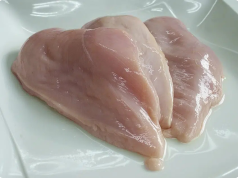It’s common to notice visible veins on your hands, arms, or legs — especially if you’re lean, athletic, or aging. In many cases, these prominent veins are harmless, the result of low body fat, exercise, or genetics.
But sometimes, suddenly visible, bulging, or discolored veins can be more than just a cosmetic quirk. They can be early warning signs of underlying health issues — some of which are serious.
Here are 5 medical conditions that can cause noticeable veins — and what you should do about them.
1. Chronic Venous Insufficiency (CVI)
What it is:
A condition where the valves in your leg veins weaken or fail, making it harder for blood to flow back to the heart. As a result, blood pools in the legs, causing veins to stretch, bulge, and become visible.
Symptoms to watch for:
- Veins that look twisted, rope-like, or swollen
- Aching, heaviness, or cramping in the legs
- Swelling in the ankles and calves
- Skin discoloration (brownish tint) or venous ulcers near the ankles
Who’s at risk:
- People who stand or sit for long periods
- Pregnant women
- Older adults
- Those with a family history of vein problems
Why it matters:
Left untreated, CVI can lead to blood clots, skin infections, or open sores that are hard to heal.
2. Varicose Veins
What it is:
A common form of superficial vein dysfunction, where veins — usually in the legs — become enlarged, twisted, and dark blue or purple. While often seen as a cosmetic concern, varicose veins can signal deeper circulatory issues.
Symptoms:
- Bulging, raised veins under the skin
- Itching, burning, or throbbing around the veins
- Leg fatigue or restlessness
- Worsening discomfort after long periods of standing
Risk factors:
- Genetics
- Obesity
- Pregnancy
- Prolonged sitting or standing
Note: While not always dangerous, varicose veins can progress to CVI or DVT if ignored.
3. Deep Vein Thrombosis (DVT)
What it is:
A life-threatening condition where a blood clot forms in a deep vein, usually in the leg or thigh. While the clot itself isn’t visible, it can cause surface veins to become more prominent due to blocked blood flow and swelling.
Warning signs:
- Sudden swelling in one leg (not both)
- Pain or tenderness, often starting in the calf
- Warmth and redness over the affected area
- Visible, engorged veins
Urgent: DVT is a medical emergency.
If the clot breaks loose, it can travel to the lungs, causing a pulmonary embolism — a potentially fatal condition.
👉 Seek immediate medical help if you experience these symptoms.
4. Congestive Heart Failure (CHF)
What it is:
When the heart can’t pump blood effectively, it leads to fluid buildup in the body — especially in the legs, ankles, and abdomen.
This increased pressure can cause veins in the neck (jugular veins) and limbs to become visibly distended.
Other symptoms:
- Shortness of breath (especially when lying down)
- Fatigue and weakness
- Swelling in the legs and feet
- Rapid or irregular heartbeat
Why it matters:
Visible neck veins (jugular venous distension) are a key clinical sign of CHF and require prompt evaluation.
5. Peripheral Vascular Disease (PVD)
What it is:
PVD occurs when arteries and veins in the limbs become narrowed or blocked due to plaque buildup (atherosclerosis). While it primarily affects arteries, it can also disrupt venous circulation.
As the body tries to reroute blood, surface veins may become more visible — a compensatory response to poor circulation.
Symptoms:
- Cold or numb limbs
- Leg pain while walking (claudication)
- Weak or absent pulses in the feet
- Shiny, thin skin over the legs
- Slow-healing sores or ulcers
PVD increases the risk of heart attack, stroke, and limb amputation if untreated.
When to See a Doctor
Not all visible veins are a cause for concern — especially if they’ve developed gradually and cause no pain.
But seek medical attention if you notice:
- Sudden appearance of bulging veins
- Pain, swelling, or warmth in one limb
- Skin discoloration, ulcers, or sores that won’t heal
- Veins that are hard, red, or tender to the touch
- One leg significantly more veiny than the other
These could be signs of DVT, CVI, or heart-related issues — all of which benefit from early diagnosis and treatment.
Final Thought: Your Veins Are Speaking — Listen to Them
Veins do more than carry blood.
They’re messengers — quietly signaling what’s happening beneath the surface.
A few visible veins may be nothing.
But sudden, painful, or asymmetrical changes could be your body’s way of saying:
“Something’s wrong. Pay attention.”
So don’t brush it off.
Don’t wait for it to get worse.
Because sometimes, the most visible sign of an internal problem is right under your skin.
Your health isn’t just in your heart — it’s in your veins.










